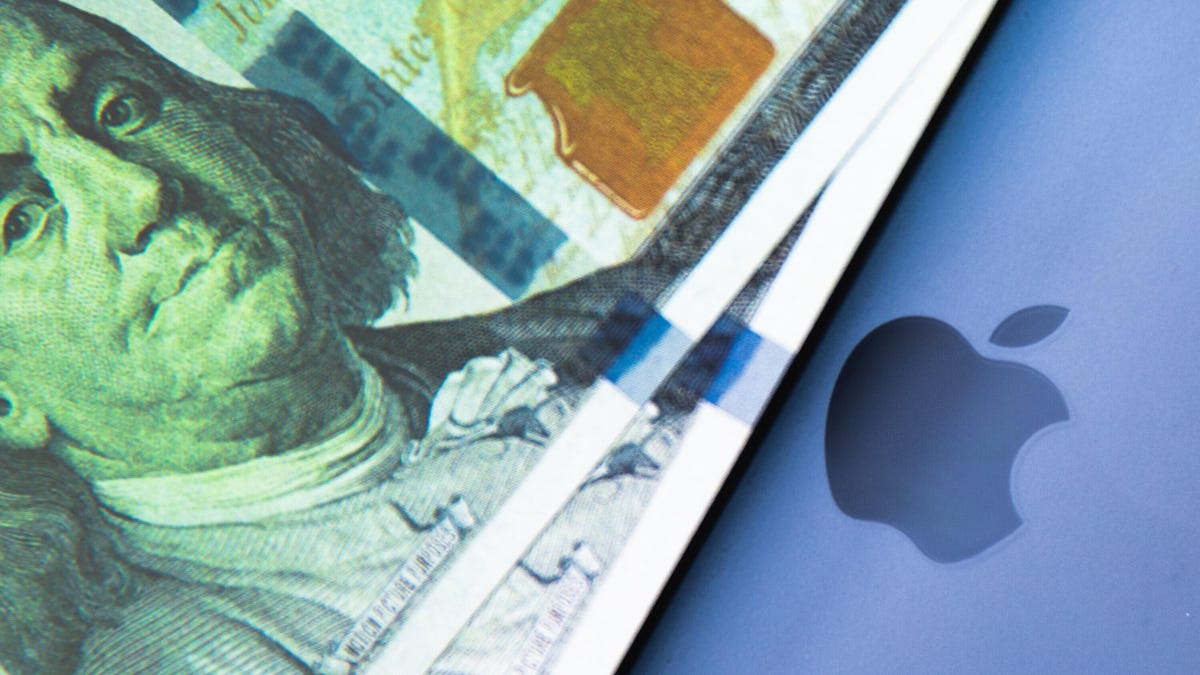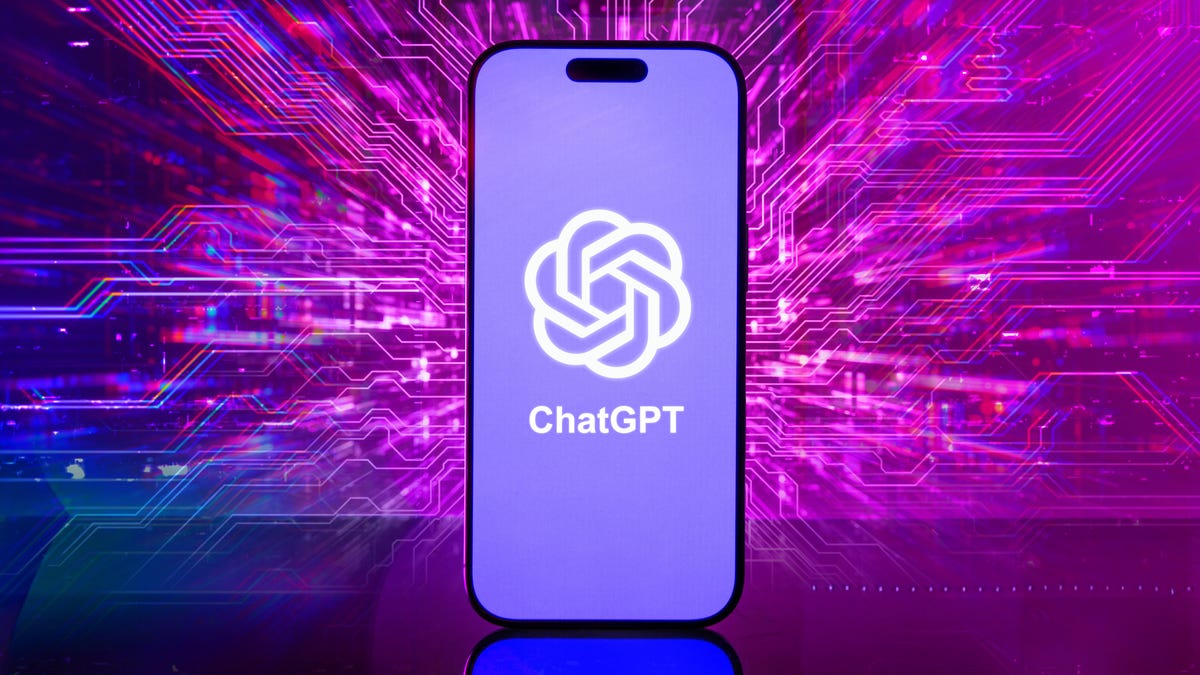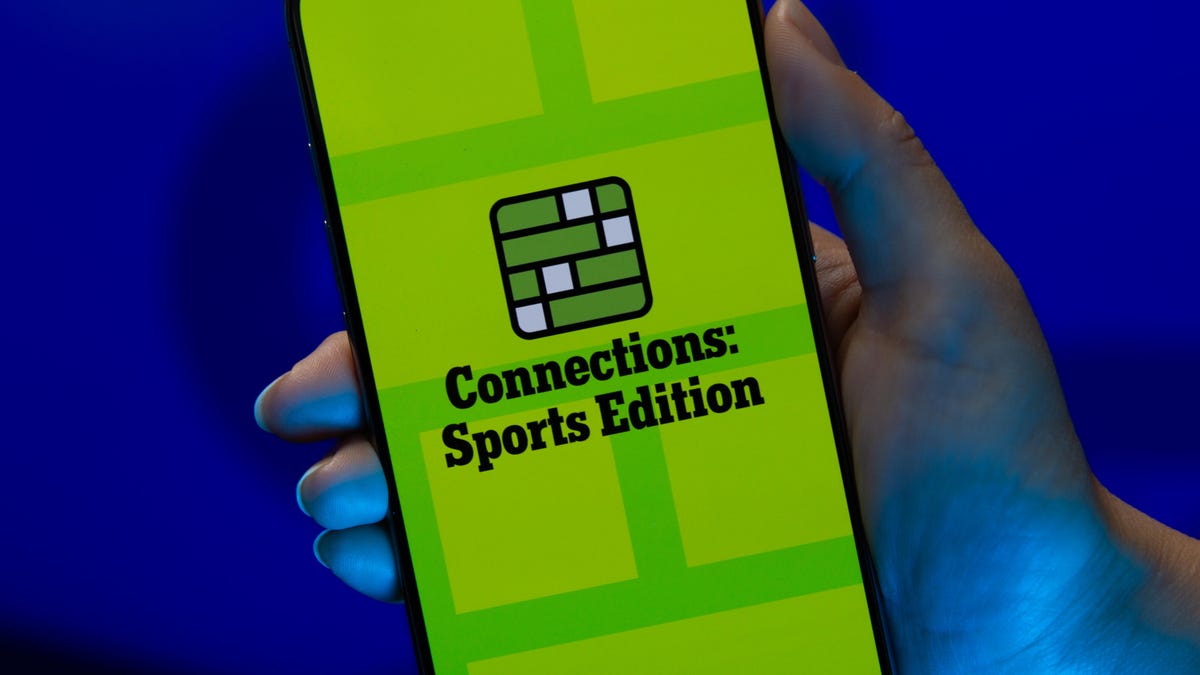Technologies
Could the iPhone’s Price Double With Trump’s New 125% Tariff? We Do the Math
Trump dumped other countries’ tariffs for now but bumped China up to 125%. Experts advise against panic-buying if it puts you in debt.

US President Donald Trump pressed pause on «reciprocal tariffs» this week, but he upped the levy on goods from China to 125% in the latest escalation of the two countries’ trade war. Experts say you should expect to pay more for your next iPhone.
Trump announced the 90-day pause on his social media platform for all countries except China because «these countries have not, at my strong suggestion, retaliated in any way, shape or form.» China, where Apple produces most of its products, has responded to each of Trump’s tariff hikes this year by increasing tariffs on US products.
«Trump is playing hardball with China, which is unsettling on many levels,» Patti Brennan, certified financial planner and CEO of Key Financial, said in an email. «As for Apple, expect the prices to double for their products.»
Apple has started to move some of its manufacturing to other countries, including India and Vietnam. Those countries were supposed to be hit with their own tariffs today — Vietnam with a 46% tariff hike and India a 26% increase — but were among the reprieved. Trump left in place a 10% baseline tariff on imports.
And though experts don’t expect costs to rise on a 1-to-1 basis with tariffs on goods from China — and other countries after the pause expires — you should expect significant increases. It’s unclear, however, exactly how much of an impact the tariffs will actually have on prices. If rising prices cause demand to plummet, experts note that Apple and other producers could reduce their prices to stay competitive.
If you’re in the market for a new Apple device or an imported gaming system, like the Nintendo Switch 2 or PlayStation 5 Pro, here’s how tariffs could raise prices, and what you should do to prepare.
Read more: Apple Shoppers Are Reportedly Panic Buying iPhones Amid Looming Tariffs
How much could iPhone prices go up with tariffs? We do the math
If the full cost of tariffs were passed on to shoppers, we’d see a 125% increase in prices on Apple products produced in China. Apple has moved some of its production to other countries, but most iPhones are still manufactured in China.
Here’s how it could affect the cost of an iPhone if the full tariffs for China were applied:
How could tariffs on China increase iPhone prices?
| Current price | 125% tariff | New price | |
| iPhone 15 (128GB) | $699 | $874 | $1,573 |
| iPhone 15 Plus (128GB) | $799 | $999 | $1,798 |
| iPhone 16e (128GB) | $599 | $749 | $1,348 |
| iPhone 16 (128GB) | $799 | $999 | $1,798 |
| iPhone 16 Plus (128GB) | $899 | $1,124 | $2,023 |
| iPhone 16 Pro (128GB) | $999 | $1,249 | $2,248 |
| iPhone 16 Pro Max (256GB) | $1,199 | $1,499 | $2,698 |
But there’s a lot more that goes into the price of an iPhone than simply where it’s manufactured. Apple sources components for its products from a long list of countries, which could face higher tariffs after the pause. And a tariff on goods doesn’t necessarily mean prices will go up by the same amount. If companies want to stay competitive, they could absorb some of the costs to keep their prices lower.
«It won’t be as high as one-to-one in terms of the tariff increases,» said Ryan Reith, group vice president for IDC’s Worldwide Device Tracker suite, which includes mobile phones, tablets and wearables. «The math isn’t as clear cut as that on the tariffs.»
Will other tech products also see price hikes?
Smartphones aren’t the only devices expected to see prices increase because of tariffs. Best Buy and Target warned consumers last month to expect higher prices for everything, after the latest round of tariffs went into effect. February’s tariff hike had already prompted Acer to announce that it was raising prices on its laptops.
Apple announced a $100 price cut on its new MacBook Air last month, a day after the last round of tariffs took effect. In what was widely viewed as an attempt to persuade Trump to «carve out» an exemption from the latest tariffs, Apple announced in February that it would spend more than $500 billion in the next four years to expand manufacturing operations in the US.
«They already committed $500 billion to US manufacturing, and there was no carve out for Apple,» Brennan said. «They will have to pass along most of these costs to consumers.»
However, regardless of the exact amount, expect tariffs on goods from China to translate into higher prices for consumers. That means the tech you use every day, like imported smartphones, tablets, laptops, TVs and kitchen appliances, could get even more expensive this year.
What’s going on with tariffs?
Trump announced a 10% baseline tariff on all imports plus «reciprocal tariffs» on imports from more than 180 countries April 2, which he dubbed «Liberation Day.» He’s long touted tariffs as a way to even the trade deficit and raise revenue to offset tax cuts, although many economists say that tariffs could lead to higher prices and may end up hurting the US economy. Stock prices plummeted after Trump’s announcement as markets reacted poorly to the sweeping tariffs.
Trump has taken an especially hard stance on China, which was already subject to tariffs that Trump ordered during his first term in office. He started in February, imposing 20% in tariffs, then announced last week a 34% tariff on goods from China. Earlier this week, he added another 50% tariff before landing today on the 125% tariff against China. China has responded with its own tariffs after each of Trump’s announcements.
Tariffs, in theory, are designed to financially impact other countries because their goods are being taxed. Tariffs are paid by the US company importing the product, and this upcharge is usually — but not always — passed on to the consumer in the form of higher prices.
Should you buy tech now to avoid tariffs later?
If you were planning to buy a new iPhone, gaming console, MacBook or other tech, buying it now could save you money.
But if you don’t have the cash on hand and need to use a credit card or buy now, pay later plan just to avoid tariffs, experts say to make sure you have the money to cover the costs before you start accruing interest. With credit cards’ average interest rates currently more than 20%, the cost of financing a big purchase could quickly wipe out any savings you’d get by buying before prices go up because of tariffs.
«If you finance this expense on a credit card and can’t pay it off in full in one to two months, you’ll likely end up paying way more than a tariff would cost you,» said Alaina Fingal, an accountant, founder of The Organized Money and a CNET Money Expert Review Board member. «I would recommend that you pause on any big purchases until the economy is more stable.»
One way to save on Apple products, even if prices go up, is to buy last year’s model instead of the newest release.
«If you aren’t planning to upgrade in the next year, there is no need to rush out to buy a new smartphone,» Shawn DuBravac, chief economist at IPC, a manufacturing trade association, said in an email. «Technology is naturally deflationary, meaning that over time performance goes up and prices generally go down for products of similar quality.»
Technologies
Your Next Vacation Starts in a Chat: TripAdvisor Debuts App Inside ChatGPT
You can tap AI and TripAdvisor for your travel planning.

You may already use artificial intelligence for planning vacations, but now you can use a new TripAdvisor app inside of ChatGPT to book hotels. The app puts TripAdvisor’s reviews and hotel insights directly into ChatGPT. It’s «a new AI-powered way to experience the best of TripAdvisor,» according to the travel company.
(Disclosure: Ziff Davis, CNET’s parent company, in April filed a lawsuit against OpenAI, alleging it infringed Ziff Davis copyrights in training and operating its AI systems.)
Using the app, trip planners can see top-rated TripAdvisor hotels on an interactive map. They can also read TripAdvisor review summaries, access details about hotels, including images and amenities, and refine results with conversational follow-ups.
Once a would-be traveler selects a hotel, they’ll see available deals from booking sites. When they choose one, they will be redirected to TripAdvisor or one of its partners to complete the booking.
Don’t miss any of our unbiased tech content and lab-based reviews. Add CNET as a preferred Google source.
The new app is available to logged-in ChatGPT users in the US on Free, Go, Plus and Pro plans. You can start using it by opening ChatGPT, navigating to Settings, then Apps & Connectors, and Browse Apps and connect to TripAdvisor. (You should only have to follow these steps once.) Then, and on subsequent visits, simply start your message in ChatGPT with the word TripAdvisor.
Join Our Daily Deals Text Group!
Get hand-picked deals from CNET shopping experts straight to your phone.
By signing up, you confirm you are 16+ and agree to receive recurring marketing messages at the phone number provided. Consent is not a condition of purchase. Reply STOP to unsubscribe. Msg & data rates may apply. View our Privacy Policy and Terms of Use.
Technologies
Group Chats With ChatGPT Are Rolling Out Globally
OpenAI wants you to collaborate with its chatbot in a group setting.

Last week, OpenAI — always looking for opportunities to put its chatbot into new spaces — introduced Group Chats with ChatGPT baked right in. Based on early feedback, it’s now expanding the feature to all logged-in users on ChatGPT Free, Go, Plus and Pro plans globally over the coming days.
The feature is pitched as a new way to use ChatGPT with other people, especially in collaboration efforts, like planning a big event.
Up to 20 people can be added to a group chat, and messages between individuals don’t count against the rate limit to ChatGPT — only when it responds.
(Disclosure: Ziff Davis, CNET’s parent company, in April filed a lawsuit against OpenAI, alleging it infringed Ziff Davis copyrights in training and operating its AI systems.)
Group chats use ChatGPT-5.1 Auto. OpenAI has also introduced some new implementations of how and when the chatbot responds. It’s been taught new social behaviors for group chats and will apparently follow the flow of the conversation and stay quiet or chime in based on what’s being said.
Adding «ChatGPT» to a message you send will always yield a response from the AI chatbot. You can also provide custom instructions to ChatGPT for the entire chat if you want it to reply in a certain tone or personality, and it can react to messages with emoji.
Don’t miss any of our unbiased tech content and lab-based reviews. Add CNET as a preferred Google source.
Group Chats don’t use memory from your existing personal chats, and new memory isn’t created from group conversations, though OpenAI says it’s exploring a way for you to opt in to use existing memory in the future.
If you’re concerned that you’ll be thrown into a dozen chats without your permission, then you’ll likely be happy to hear that you must accept an invitation before you can be added to a group chat with ChatGPT. Additional safeguards are also in place for users under the age of 18, which will reduce sensitive content to all within the group chat.
OpenAI says Group Chats are the beginning of its effort to make ChatGPT more of a shared and collaborative space for people.
Technologies
Today’s NYT Connections: Sports Edition Hints and Answers for Nov. 21, #424
Here are hints and the answers for the NYT Connections: Sports Edition puzzle for Nov. 21, No. 424.

Looking for the most recent regular Connections answers? Click here for today’s Connections hints, as well as our daily answers and hints for The New York Times Mini Crossword, Wordle and Strands puzzles.
Today’s Connections: Sports Edition is a fun one. If you know a Gen Z person, you might be familiar with their favorite nonsense phrase, «6-7.» The puzzle editors throw a 6 and a 7 into the puzzle today just to see if we’re paying attention. Do the numbers end up in the same group? I bet you know the answer to that one. If you’re struggling with today’s puzzle but still want to solve it, read on for hints and the answers.
Connections: Sports Edition is published by The Athletic, the subscription-based sports journalism site owned by The Times. It doesn’t appear in the NYT Games app, but it does in The Athletic’s own app. Or you can play it for free online.
Read more: NYT Connections: Sports Edition Puzzle Comes Out of Beta
Hints for today’s Connections: Sports Edition groups
Here are four hints for the groupings in today’s Connections: Sports Edition puzzle, ranked from the easiest yellow group to the tough (and sometimes bizarre) purple group.
Yellow group hint: Splish-splash.
Green group hint: Football score.
Blue group hint: Colorado QB.
Purple group hint: Not small.
Answers for today’s Connections: Sports Edition groups
Yellow group: Four primary swimming strokes.
Green group: Touchdown.
Blue group: Associated with John Elway.
Purple group: Big ____.
Read more: Wordle Cheat Sheet: Here Are the Most Popular Letters Used in English Words
What are today’s Connections: Sports Edition answers?
The yellow words in today’s Connections
The theme is four primary swimming strokes. The four answers are back, breast, fly and free.
The green words in today’s Connections
The theme is touchdown. The four answers are 6, paydirt, TD and tuddy.
The blue words in today’s Connections
The theme is associated with John Elway. The four answers are 7, Broncos, No. 1 pick and Stanford.
The purple words in today’s Connections
The theme is Big ____. The four answers are 12, dance, leagues and ten.
-

 Technologies3 года ago
Technologies3 года agoTech Companies Need to Be Held Accountable for Security, Experts Say
-

 Technologies3 года ago
Technologies3 года agoBest Handheld Game Console in 2023
-

 Technologies3 года ago
Technologies3 года agoTighten Up Your VR Game With the Best Head Straps for Quest 2
-

 Technologies4 года ago
Technologies4 года agoBlack Friday 2021: The best deals on TVs, headphones, kitchenware, and more
-

 Technologies4 года ago
Technologies4 года agoVerum, Wickr and Threema: next generation secured messengers
-

 Technologies4 года ago
Technologies4 года agoGoogle to require vaccinations as Silicon Valley rethinks return-to-office policies
-

 Technologies4 года ago
Technologies4 года agoOlivia Harlan Dekker for Verum Messenger
-

 Technologies4 года ago
Technologies4 года agoiPhone 13 event: How to watch Apple’s big announcement tomorrow
